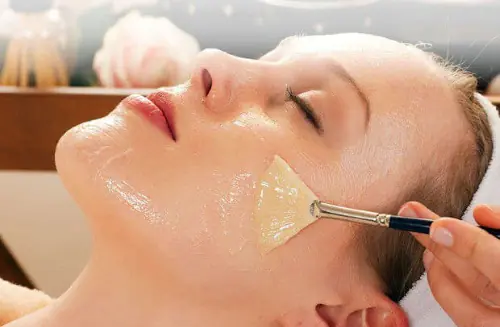In order to see your face looking young and radiant after peeling, you must adhere to certain skin care rules. As a rule, a cosmetologist gives a list of advice to a woman after the exfoliation procedure. These requirements are mandatory.
Some women believe that by choosing an experienced cosmetologist and paying a considerable amount for exfoliation, they are guaranteed to get a good result. Of course, the success of the procedure depends on the professionalism of the salon master. But the result is greatly influenced by how correctly the rehabilitation was carried out. Even the impeccable work of a cosmetologist can be nullified by incorrect post-peeling care.
What happens to facial skin after peeling?
The salon master often has to answer questions from clients: is it possible to sunbathe, go to the bathhouse, or make nourishing masks after facial peeling? In order for a woman to understand what to do after exfoliation and what to watch out for, she should understand the nature of exfoliation.
Exposure to chemical compounds, devices, and lasers causes injury to the skin. The damaged epidermis begins to launch the regeneration process. In place of dead exfoliated cells, young ones are formed, collagen and elastin are intensively released. As a result, the dermis is transformed in place of scars, wrinkles, age spots and young, elastic, healthy skin is formed. The most important thing at this moment is to carry out proper rehabilitation of the skin or restoration of the epidermis after peeling.
Exfoliation comes in different types depending on the method and depth of impact, but the principle of action is that the skin is exfoliated. Immediately after peeling, you should not wash your face for 24 hours, as there is a high risk of infection and complications. In addition, tap water contains chlorine, which can irritate the epidermis.
After 2-3 days, a feeling of tightness appears on the face, and then the skin after peeling is removed with a film. At this moment, crusts form on the face, which is a normal physiological stage of skin healing after a burn or injury. Under this hard layer, young epidermal cells are actively formed. Touching the face or removing scales is strictly prohibited. Independently removing crusts and films from the face with your hands or using scrubs can result in scars. They will be much more difficult to remove.
What should you not do after peeling?
There are certain recommendations from cosmetologists about what not to do after facial peeling:
- You should not wash your face with water for the first 24 hours after exfoliation. After 2-3 days, you can wash your face with boiled warm water. After a few days, it is recommended to use mild cleansers that do not contain abrasive particles;
- The use of cosmetics and decorative cosmetics is also not allowed. Foundation, powder, blush, bronzer or highlighter can become a source of infection and clog pores. In addition, makeup applied to flaky skin looks unaesthetic;
- visiting a bathhouse, experiencing stress, eating spicy foods, and drinking alcoholic beverages is not recommended. All these actions lead to dilation of blood vessels and prolong the period of hyperemia (redness of the face);
- Do not engage in active sports, as this promotes increased sweating. Drops of sweat contain salts and irritate the epidermis, and are also a favorable environment for the development of infection;
- Trying new brands of cosmetics is not recommended, as the skin's reaction to them can be unpredictable. The cosmetologist will tell you what products and preparations need to be used after superficial or other peeling;
- Do not self-medicate if complications or adverse reactions occur. In this case, you need to contact a cosmetologist or dermatologist;
- Do not expose your skin to the risk of infection: touch it with your hands, visit the pool, swim in natural bodies of water;
- stay in direct sunlight for a long time, walk in windy, rainy or frosty weather.
Features of facial care after certain procedures
Each type of exfoliation has its own characteristics. The effect on the epidermis is carried out in various ways and with varying degrees of intensity. Restoring the skin after peeling of one type or another requires special care. The more intense the impact was directed at the epidermis, the more serious the injury. For example, with deep exfoliation, almost all layers of the skin are exfoliated, leaving only a thin layer of tissue. Rehabilitation after such peeling will be the longest.
Superficial peeling
Superficial exfoliation affects only the upper layers of the epidermis. With this procedure, you can eliminate the problem of acne, fine wrinkles, and give your face a fresh, healthy look. In this case, the skin receives minimal trauma and is restored in the shortest possible time, up to 10 days. The main rule of rehabilitation after superficial peeling is to exclude contact with water for 1-2 days. During this time, the face will turn red. The woman has a feeling of tightness.
The next day, the skin begins to actively peel off and this is a normal reaction to exposure to abrasives and chemicals. On the 3rd day after peeling, you can wash your face with boiled water. As a cleanser, you should choose delicate foams and gels without abrasive particles, fragrances and dyes. You can use an ointment with a wound healing effect, for example Panthenol. Do not peel off crusts that may form on the face with your hands or otherwise peel them off. They should come off on their own.
Please note: when applied to the epidermis, Panthenol may sting a little. The skin after exfoliation is especially sensitive to any influences.
Don't forget about sunscreen cosmetics that will protect against the appearance of age spots.
Medium peeling
The medial type of exfoliation affects the deeper layers of the epidermis down to the basement membrane, therefore, the skin suffers serious damage. The most popular are retina peeling, dermabrasion and laser exfoliation. After these manipulations, a 2-week facial rehabilitation takes place. During the rehabilitation period after medium-type chemical peeling, the layers of the epidermis are restored, the skin becomes young, elastic, wrinkles are smoothed out, scars and cicatrices become less pronounced.
In addition to the basic recommendations of cosmetologists, there are a number of tips that should be followed. After a medium chemical peel, do not wash your face for 48 hours. On the 3rd day you can wash your face with boiled water.
During the process of medial exfoliation, the deep layers of the epidermis are exfoliated. Therefore, facial rehabilitation after retinoic peeling is often accompanied by swelling, redness, and inflammation of the face. Normally they should disappear after 2 weeks.
Attention! If swelling, inflammation, and redness of the face are excessive and do not disappear after 14 days, you must consult a cosmetologist or dermatologist.
During the rehabilitation process, it is allowed to use ointment with panthenol, complementing it with facial care cosmetics prescribed by the salon master.
A day after exfoliation, peeling of the face occurs, which can last up to 1.5 weeks. You can’t tear it off to avoid scars and scars.
Before going outside, even in cloudy weather, apply sunscreen.
Deep peeling
Effective procedures such as TCA peel and phenol exfoliation are deep exfoliation. Thanks to these cosmetic procedures, you can significantly rejuvenate the skin and eliminate serious defects. In this case, the skin is seriously injured. The deep exfoliation procedure is performed under anesthesia, and rehabilitation takes place in a hospital setting. Many women are interested in: why can’t you wash your face after a TCA peel? After deep peeling, only a thin layer of cells remains from a woman’s skin, which require minimal intervention for restoration. Water can become a source of infection or a breeding ground for microbes. Inflammation is fraught with deep scars and scars. Therefore, contact with water should be avoided for up to 4 days. It is even recommended to drink water through a straw.
Rehabilitation takes a long period of up to 2 months. At this time, the doctor prescribes antiviral drugs, vitamins and special cosmetics. If a TCA peel has been performed, you should not self-medicate or take unauthorized medications.
The skin may darken after a deep exfoliation procedure, but this defect disappears over time. During the recovery period, and then constantly, it is necessary to apply sunscreen to your face.
Recommendations from cosmetologists
If you follow the care recommendations described above, there should be no adverse reactions or complications after exfoliation. An experienced cosmetologist will definitely share a couple of secrets with the client. They will help restore your face after peeling in the shortest possible time and consolidate the result for a long time. Here are some important recommendations from cosmetologists:
- peeling of the skin is normalized by moisturizers based on hyaluronic acid with the addition of shea butter or grape seed;
- In order for facial redness to go away faster, you need to adjust your diet by eliminating spicy, pickled foods, alcohol, and also adding foods with omega-3 acids;
- Edema will be eliminated by products containing antioxidants, as well as decongestant ointments prescribed by a doctor;
- Acne is not a normal reaction of the body to exfoliation. You need specialist consultation and adequate treatment;
- allergies may occur if exfoliation was carried out without a preliminary allergy test. The doctor prescribes an antihistamine.
- Increased formation of age spots is a consequence of an unsuccessful time of year for the procedure or ignoring the application of products with SPF. If you still have pigmentation, you should pay a visit to a cosmetologist. He will look at how the skin has recovered, whether there are any adverse reactions, and prescribe the necessary procedure.
Summary
Peeling is a wonderful way to “erase” almost all imperfections from a woman’s face. But, unfortunately, the success of the procedure depends not only on the qualifications of the cosmetologist. It is very important for a woman to follow all the advice of the salon specialist. Then unpleasant consequences and complications will bypass you, and your skin will glow with youth and health.
Peels should not be underestimated. They play a huge role in proper care, especially for aging skin, and have several varieties, but the most popular today remains chemical. Performed by the hands of an experienced specialist, it allows not only to thoroughly cleanse and rejuvenate the skin, but also to solve certain problems with it. It is important to remember that a person after peeling with aggressive substances needs careful care until complete recovery.
The essence of the procedure
The easiest way to loosen and remove unnecessary cells is to treat your face with acid. Its type and concentration are selected depending on the type and condition of the skin. The impact is carried out evenly over the entire area, so no traces remain after restoration.
But at the same time, the natural protection of the skin - the hydrolipid barrier - is destroyed. Now any negative impact of the environment will immediately affect its condition. Moreover, acidic compounds can penetrate quite deeply. That is why care after such facial peeling must be very careful and properly selected.
Impact level
Acid peeling can be superficial, medium or deep depending on the degree of impact on the skin.
- Surface, most often this is mandelic or retinoic acid (yellow); you can even do it at home. It only works in the upper layer of the epidermis and does not solve serious problems. But it perfectly refreshes the complexion, cleanses and slightly tightens enlarged pores. Indicated as a seasonal care product for young skin - up to 30-35 years. After it, it is enough to use a good moisturizer and protect your face from the sun.
- Median (fruit, glycolic, etc.). Penetrates deeply enough to have a direct effect on the skin structure. It stimulates the production of collagen and elastin, eliminates pigmentation and accelerates metabolic processes. The procedure is quite painful and the skin takes up to two weeks to recover after it. It requires the use of special healing ointments and gels.
- Deep. This type of peeling is performed only in a hospital setting and the patient spends the first two days under the supervision of medical staff. In terms of its effect, deep chemical peeling is comparable to laser peeling. Only in the first case does the acid work, and in the second does it work with a directed beam of photons. Afterwards, the face becomes covered with a crust, which is protected with a sterile gauze bandage. Then it begins to gradually peel off and facial care during this period is also specific.
In beauty salons, superficial and medium peels are most often performed, so further we will talk about skin care after them. In case of deep rehabilitation, it is carried out under the supervision of a doctor and he gives individual recommendations.
Important Details
There are no small details in cosmetic procedures. Sometimes it is the lack of understanding of important points and details that leads to the development of complications after seemingly simple procedures. It all starts with proper preparation of the skin for intense exposure. And the end should be step-by-step, properly structured care for the entire period of active rehabilitation.
Preparation
It is advisable to prepare the skin for a fairly aggressive chemical peeling procedure. First of all, you need to make sure there are no contraindications. Then try to moisturize the epidermis well, since the acid itself causes it to dry out.
Due to the destruction of the hydrolipid barrier, the protective properties of the skin are sharply reduced. Therefore, it is important to take care to strengthen your immune system. You can take immunomodulators or a course of multivitamins two weeks before peeling.

Those who already have the herpes virus in their blood must prevent it from becoming active after the procedure. This is very important, since pigment spots or scars may remain in place of the formed blisters. Therefore, 2-3 days before peeling, it is advisable to take Gerpevir or its analogues.
Sometimes superficial facial peeling is performed immediately after cleaning by a cosmetologist. This procedure helps to get rid of pimples and acne quite quickly, but is quite unpleasant. Skin care after it should be the same as after a mid-peel, since the acid penetrates quite deeply in injured areas.
First hours
Even superficial peeling always provokes quite intense redness. After the middle period, swelling is added to it, which can last from several hours to several days. There is usually no severe pain. But many people are bothered by skin tightness and mild itching.
Under no circumstances should you touch your face with your hands, much less scratch it or pick off crusts that have appeared. The uniformity of skin healing depends on this. If its integrity is compromised and an infection gets into the wound, a scar or mark like acne may appear.
Usually, immediately after the procedure, a mask or foam with panthenol is applied to the face. After it, the face is covered with the thinnest shiny film. It is advisable not to damage it, so it is better to choose care products in the form of sprays, for example with aloe extract. They are sprayed onto clean skin several times a day and the residue is carefully blotted with a napkin.
On the first day, it is better not to wash your face in the usual way. You can very carefully wipe your face with a cotton swab moistened with lotion for sensitive skin, mineral or thermal water.
It is important to avoid mechanical friction against the pillow. Therefore, you will have to sleep on your back. The swelling will go away faster if the head is slightly elevated.
Full recovery
After a chemical peel, the main task of skin care is to constantly moisturize it. Around the third day, active peeling and peeling of the resulting crusts begins. If your face is not smeared with high-quality creams, it will peel off quickly and cracks may even appear. Apply the cream in a thin, even layer, and be sure to blot off any remaining cream after 3-5 minutes with a napkin.
On the recommendation of a doctor, after the middle peeling, you can treat the skin with healing-accelerating agents: Solcoseryl, Traumeel, etc. You cannot make any masks, including those according to folk recipes. Ultrasound is sometimes used to eliminate excessive swelling. If you have a portable device, you can perform the procedures at home yourself.
Complete restoration of the protective layer with superficial peeling takes up to 14 days, with medium peeling – up to one month. A number of prohibitions apply during this period. It is forbidden:
- use decorative cosmetics;
- do any hardware procedures;
- apply scrubs and film masks;
- actively engage in sports;
- sunbathe and visit the solarium;
- swim in open reservoirs and pools;
- do a facial massage.
In the first 14 days, you can go outside at any time of the year only with sunscreen with a UV filter of at least 30 (in summer - 50). Then a day cream with a filter of 15 is quite enough, and on bright days – 25-30.
Possible complications
If peeling was performed by a competent specialist who correctly selected the active ingredients and their concentration, complications after it are rare. And most of them are the fault of the patients themselves, who did not follow the recommendations for skin care during the period of its recovery.
Among the most common problems:
- Prolonged hyperemia. Usually occurs in patients with rosacea or an allergic reaction to one of the components of the acid mixture. Therefore, for sensitive and thin skin, it is better to conduct a test first.
- Allergy. Obvious negative skin reaction to the drug. Accompanied by severe itching, swelling, and rashes. The condition is alleviated by antihistamines.
- Pigmentation disorder. If exposure is too intense, melanocytes may be damaged. This leads to hyperpigmentation or the formation of white spots. The problem is difficult to correct.
- Excessive fat content. It is an individual reaction of the body. Sometimes he tries to restore the destroyed hydrolipid layer as quickly as possible, repeatedly increasing the activity of the sebaceous glands.
The risk of infection of any skin lesions also increases, creating favorable conditions for the proliferation of pathogenic microorganisms. Therefore, it is very important not to touch your face with your hands again, wash it at least twice a day and try not to catch viruses or colds.
Why is it needed?
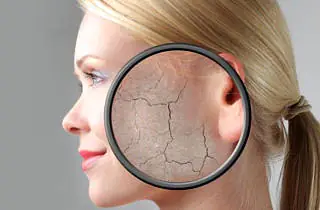
The upper layer of the epidermis consists of dead, keratinized scales, which gradually peel off and are removed during washing. If you constantly use cosmetics, they mix with its remains and form a fairly dense crust that does not allow the skin to breathe normally.
This leads to various problems:
- clogged pores;
- pimples and blackheads;
- excessive fat content;
- dilated capillaries;
- grayish complexion.
Removing this stratum corneum allows oxygen to reach the skin and allows cells to regenerate faster. The face immediately becomes refreshed and smooth. This cleansing can actually replace old cells with new ones and thus gives a rejuvenating effect.
Makeup
This issue is especially acute for women. When can you start applying makeup after chemical peeling, and how to remove active peeling of the skin. Cosmetics - no way. Foundation or powder will only emphasize it even more, and at the same time clog the pores and neutralize the result of the procedure.
For the first week, even after superficial peeling, decorative cosmetics are prohibited. Starting from the second, you can do light makeup. The base for it is a high-quality moisturizer. After this, you can apply a thin layer of corrector to the desired areas and then apply a little loose transparent mineral powder.
Summing up
According to most patients, providing quality facial care after a chemical peel is not that difficult. The main thing is to remember that the skin is already injured and any additional negative impact on it is extremely undesirable. Avoid high and low temperatures, excess humidity, direct sunlight, wind, mechanical and chemical irritants.
Since such peeling is a controlled burn, there is always peeling and crusting after it. They should not be torn off under any circumstances, so as not to provoke complications. If they do appear and do not go away within a few days, what to do, it is better to ask a cosmetologist rather than try to solve the problem yourself.
Skin requires careful care and respect for itself. This is a protective barrier that will prevent pathogenic bacteria from entering the body. You need to take care of your face every day to maintain youthful and beautiful skin.
Effect of peeling on the skin
Exfoliation is a procedure that is necessary to remove dead cells from the skin. They prevent oxygen, vitamins and nutrients from penetrating into the deep layers of the dermis. Cells are renewed once every 30 days. Therefore, a deep cleaning is performed. When the procedure is completed, the skin must be properly cared for to avoid complications after peeling.
If you do not peel, problems appear on the skin:
- loss of elasticity;
- healthy skin cells are damaged;
- pores become clogged;
- folds and wrinkles appear.
After performing the procedure, collagen production increases, the process of regeneration and cell renewal accelerates. Girls and women note that wrinkles are smoothed out and age-related changes on the skin disappear.
What skin condition after peeling is considered normal?
After peeling, the skin peels off, irritation and redness occur. This is a normal condition that appears after trauma. Aggressive components used during the procedure promote deep cleansing. The skin will take longer to fully recover.
Skin condition after peeling, which is considered normal:
- Deep peeling. The face becomes red, peeling appears, and pain is felt.
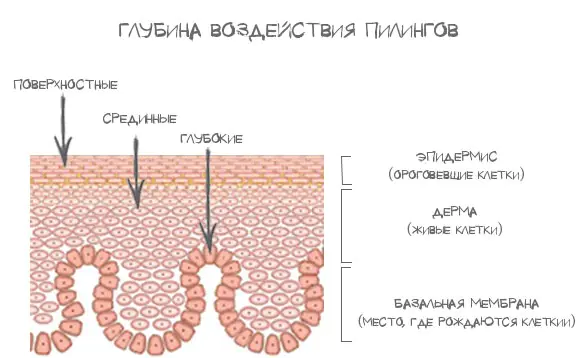
- Medium peeling. During the procedure, the skin is severely injured, so a dry crust, swelling and redness appear on the surface of the face. It becomes painful and tender when touched.
- Superficial peeling. This is a less traumatic procedure. The skin experiences mild irritation, redness and peeling, which resolves within two days.
Features of skin care after peeling depending on the depth of exposure
Women and girls should follow practical advice:
- Care after deep peeling. Antibiotic drugs reduce the likelihood of infection. It is recommended to use light foams and milks that do not contain ethanol and acid. Before a walk, you need to apply a cream that has the maximum degree of sun protection.
- Medium peeling. Cosmetic products that have a calming effect are used for washing and cleansing. You can wash your face on the third day. Women and girls are prescribed Bepanten, which helps reduce discomfort, eliminate swelling and redness. If a dry crust occurs, it is treated with a moisturizer.
- Care after superficial peeling. During the day, the skin is lubricated with tonic and a light texture moisturizer is applied.
Facial skin care after peeling involves daily washing with clean water, using tonics, Bepanthen.
Skin care depending on the elapsed time
During the first 12 hours it is prohibited:
- wash face;
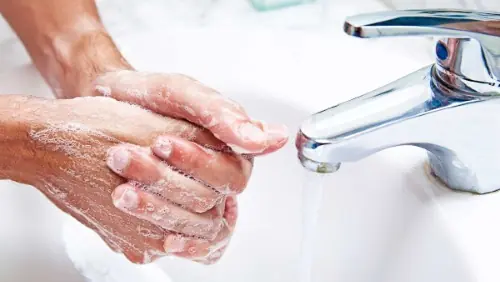
- touch the skin;
- apply cosmetics, use toner and other cleansers;
- go out into the fresh air.
During the first two days, it is allowed to use foam or gel for washing if it has a light and airy texture. It is forbidden to use moisturizer for 3 days after the procedure. It is recommended to buy a product containing lanolin.
Skin care after peeling during the first 14 days:
- You need to visit the cosmetologist again. Cosmetics should moisturize, tone, and relieve inflammation. You need to carefully read the composition of the cream to ensure it contains antioxidants.
- It is prohibited to use cosmetics that are applied to the skin. This is powder, foundation, concealer. Mascara and lipstick are not excluded from makeup.
- Do not touch your face with your hands.
- If crusts form, you cannot remove them yourself. Underneath them, the skin regeneration process occurs, which can be disrupted if treated carelessly. The crusts dry out on their own and fall off after a while.
- It is prohibited to use scrubs and other cosmetics if they contain abrasive components.
- You need to walk in cloudy weather or in the evening.
The duration of rehabilitation after peeling is 2 weeks.
What complications can occur after peeling?
Complications after peeling appear on the day of the procedure or after 1-2 days.
Skin care involves the use of creams and tonics. Possible complications:
- allergic reaction in the form of rashes, swelling, redness;
- persistent erythema;
- pigmentation;
- acne;
- scars of a hypertrophic or keloid nature;
- fibrosis;
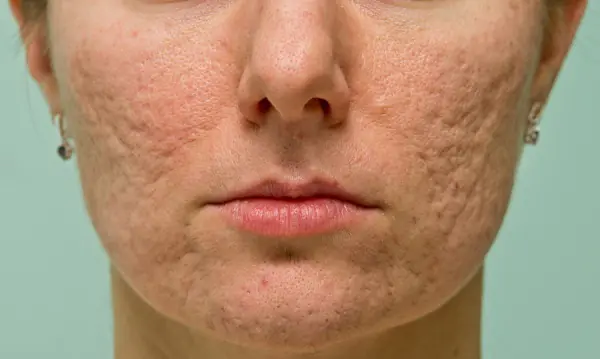
- atheroma (sebaceous gland cyst);
- anaphylactic shock.
How to care for your skin after peeling if peeling appears?
Peeling is a response of the skin to the procedure. Dryness occurs after 2 days and completely disappears after 6 days. To speed up the regeneration process and eliminate discomfort, you need to use moisturizing creams and gels.
They are prescribed to girls who have had light or medium peeling. Preparations containing hyaluronic acid are also used.
After 3 days, you can use grape seed oil and fatty acids. They prevent the occurrence of scars, scars, and eliminate the feeling that the skin is tightening.
How to care for your skin after peeling if redness appears?
The face becomes red after the procedure. Redness completely disappears after 6-7 days. With deep peeling, blood overflow of the blood vessels of the circulatory system persists for 14 days.
At this time, it is forbidden to play sports, experience strong emotional stress and stress. During experiences, blood rushes to the skin, so the process may take longer. It is necessary to adjust the daily diet.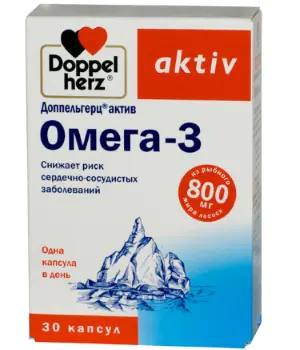
It is forbidden to eat canned food, spicy foods, and alcoholic drinks.
It is recommended to use Omega-3 for 14 days to replenish the supply of polyunsaturated acids and strengthen weak and damaged vascular walls. Arnica cream or Lyoton-gel has a good effect on the condition of reddened skin.
How to care for your skin after peeling if swelling appears?
Skin care after peeling includes the use of cosmetics that promote additional hydration and accelerate the regeneration of the damaged barrier layer. Swelling occurs after peeling if the skin is thin. This symptom causes discomfort after cleaning if trichloroacetic acid was used.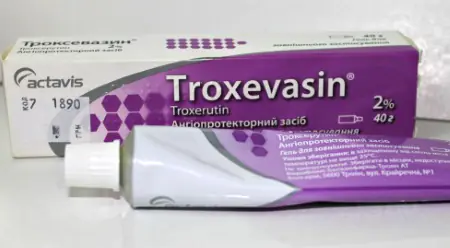
Girls and women are recommended to use Troxevasin ointment, Lyoton-gel. They help eliminate swelling. Eufillin tablets promote rapid restoration of damaged skin.
How to care for your skin after peeling if pimples appear?
Acne is a normal and natural skin reaction to the procedure. They occur if women and girls do not properly care for their skin. If acne occurs on the skin, the use of zinc-based preparations is prescribed.
They help alleviate the condition and eliminate acne with wet internal contents, because they have a drying effect. Additionally, antibacterial, sebostatic and anti-inflammatory drugs are prescribed.
How to care for your skin after peeling if an allergic rash appears?
This reaction is typical for women and girls who are prone to allergies. Before the procedure, a test control is carried out to check the skin's reaction to the use of cosmetics during peeling. If an allergic reaction occurs after the procedure, you need to use hypoallergenic foams, gels, creams and other products.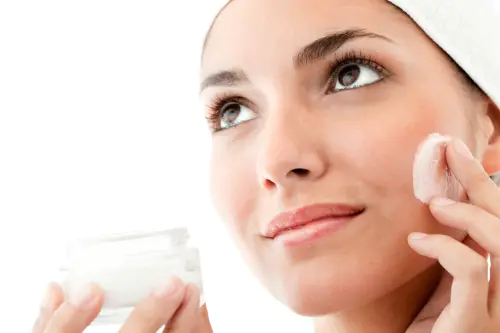
They should contain water, glycerin, hyaluronic acid, vitamins, animal fats, and natural plant extracts. Additionally, antihistamines are administered by injection.
Skin care after peeling in case of dark pigment spots
Peeling is carried out in autumn, early spring or winter. Ultraviolet rays negatively affect cleansed skin. If you do not prepare your face with kojic or retinoic acid, there is a possibility of developing age spots. When they begin to appear, you need to protect yourself from sunbathing and exposure to ultraviolet rays on your face.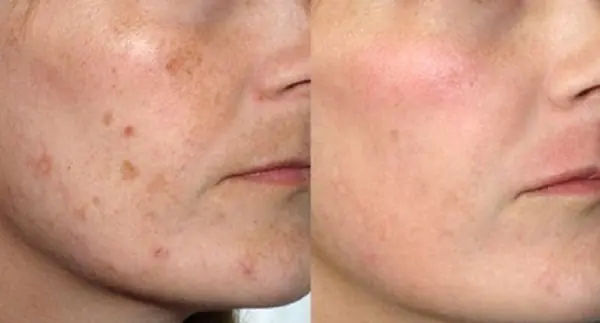
You should stop using cosmetics if they contain lemon oil, bergamot, cinnamon, lavender, or St. John's wort extract. If pigment spots do not disappear, they are eliminated with whitening procedures in a cosmetologist's office. Cosmetics help well if they contain the substance glabridin, ascorbic acid, hydroquinone.
They stop the free release of tyrosine, which, after oxidation, forms the pigment melanin on the skin of the face. In advanced cases, it is recommended to carry out a salon whitening procedure.
Care after laser peeling
It is necessary to take care of the skin and carry out skin care measures after this type of cleansing, taking into account the following nuances:
- during the first 3 days, do not use cosmetics if they contain alcohol or ethanol;
- apply sunscreen before going outside;
- do not visit the sauna or swimming pool;
- You can’t sunbathe or be under the sun;
- using creams that smooth and moisturize the skin.
Post-Jessner peel care
It is necessary to take care of the skin and carry out skin care measures after this type of cleansing, taking into account the following nuances:
- at home, apply a rich cream;
- using Panthenol to eliminate discomfort;
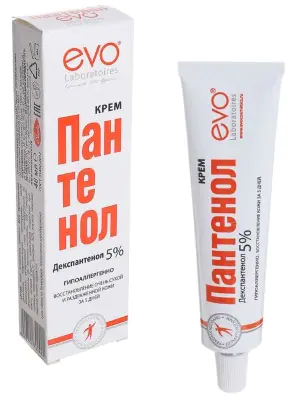
- Irrigation of the skin after 2 days with thermal water throughout the day;
- Do not wear makeup or cosmetics;
- washing with warm water;
- use of cosmetics containing SPF.
Care after retinoic peeling
It is necessary to take care of the skin and carry out skin care measures after this type of cleansing, taking into account the following nuances:
- do not use cosmetics with retinoids during the first 14 days;
- You can’t dye your hair or do a permanent wave;
- Buranchik oil, shea butter, peptides, Panthenol help restore the skin;
- Fireweed extract helps restore the functioning of the sebaceous glands.
Care after fruit peeling
It is necessary to take care of the skin and carry out skin care measures after this type of cleansing, taking into account the following nuances:
- you can’t go outside for 5 days;
- skin protection from the sun;
- avoiding stressful situations so that blood does not rush to the skin;

- use of ethanol-free moisturizers.
Care after deep chemical peeling
It is necessary to take care of the skin and carry out skin care measures after this type of cleansing, taking into account the following nuances:
- Restoration of hydrobalance and damaged barrier layer. These are water-based gels and foams containing hypoallergenic substances.
- After 3 days, you can use your usual serum or moisturizer with antioxidants. They relieve peeling, itching and irritation after deep chemical peeling.
- Using creams with UV protection. They will help prevent peeling and redness.
Skin care after hardware peeling
After hardware peeling, skin color improves, wrinkles are smoothed out, and pores are narrowed.
Care after cleaning:
- for 30-35 days it is forbidden to sunbathe under the sun or visit a solarium;

- Before going outside, you must apply sunscreen;
- applying a moisturizer that matches your skin type.
Skin care after peeling will help avoid complications such as allergic reactions, acne and swelling. For the first 2-3 days, women feel skin tightening, peeling and redness.
Care after ultrasonic peeling
Ultrasonic peeling helps get rid of acne, dead cells, excessive secretion of sebaceous glands, enlarged pores, and decreased tone. The procedure is non-traumatic and has a mild effect.
Care after ultrasonic peeling:
- the first day after the procedure you cannot wash your face;
- do not scrub for 5 days and do not use products with abrasive components;
- after laser peeling, you need to apply a soothing cream to the skin, which will help relieve redness;
- Cosmetics are not applied for the first 2 days.
Care after TCA peeling
After 20-30 minutes, redness, swelling, and burning begin to appear on the skin. After 12-24 hours, a dry crust forms. On the fifth day they gradually disappear. The skin becomes even in color, smooth and slightly pinkish in color.
The skin needs to be provided with comprehensive and intensive care for two weeks. The main task is to prevent dehydration, activate regeneration and recovery.
Care includes:
- the use of drugs that retain moisture in the body, stimulate regenerative processes, and prevent scarring (the composition should contain vitamins, aloe extract, zinc or hyaluronic acid);
- use of antiviral drugs;
- the use of cosmetics that have a high level of protection against ultraviolet radiation;
- taking anti-inflammatory drugs (witch hazel extract, calendula), which help reduce swelling, hyperemia, and inflammation.
Care after glycolic peeling
After glycolic peeling, you must follow the following care recommendations:
- The use of creams that have a high degree of protection against the negative effects of ultraviolet rays. If you do not follow the recommendation, pigmentation will appear on the skin.
- Refusal of decorative cosmetics for 4-5 days. The skin must recover.
- It is prohibited to visit the bathhouse or sauna.
Care after bodyaga peeling
- applying Bepanten 5% cream to the skin (elimination of irritation and discomfort);
- the use of drugs based on bisabolol, aloe vera, hyaluronic acid (relieve itching, redness, pain);
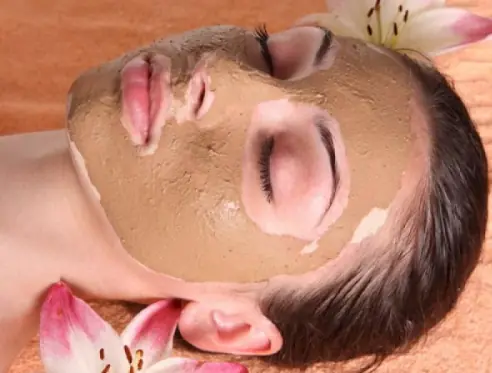
- within 4-5 days it is important to stop applying decorative cosmetics;
- using products that protect the skin from ultraviolet rays.
Care after peeling with salicylic acid
Rehabilitation lasts 7-10 days. Care instructions:
- you can’t sunbathe in the sun;
- the use of cosmetics that protect the skin from ultraviolet radiation;
- in sunny weather you need to wear hats and panama hats with wide brims;
- green tea compress.
Home care products after peeling
At home, you can quickly relieve discomfort and help the skin recover faster after peeling. A mask based on troxevasin helps accelerate regenerative processes. This medicine relieves redness and swelling. To do this, you need to buy troxevasin in gel form, apply a thick layer to the face, leave for 15-20 minutes and remove the residue with a cotton pad.
A banana mask works well. This product is rich in vitamins and minerals that help relieve discomfort, pain, irritation and redness. To make a mask, you need to take 1-2 bananas and crush them. Before use, wipe the skin with a cotton pad. The mask must be applied in a thick layer. Leave on face for 20-25 minutes.
Another effective remedy: honey and green tea in a 1:1 ratio. These ingredients prevent moisture from evaporating from the deep layers of the skin. Before application, it is important to wipe your face with a cotton pad soaked in cosmetic toner. Apply a thin layer to the face and leave for 15 minutes. You need to rinse off with warm water.
Consequences and complications of improper skin care
If you do not follow the rules of facial skin care after peeling, you may encounter various complications and consequences:
- excessive dryness, dehydration of new cells;
- hyperemia or severe redness of the skin;
- severe peeling;
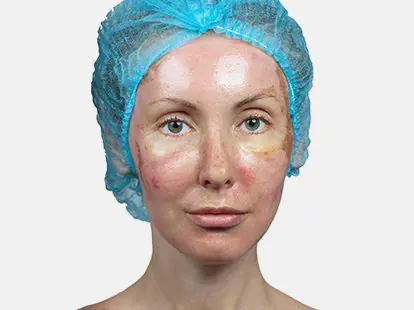
- burning, tingling;
- allergic reaction to incorrectly selected cosmetics;
- exacerbation of herpes diseases, scar formation;
- rash and itching.
Signs of skin recovery
Skin cells slough off after 2-3 days. During this period, you should not squeeze pimples or pick off scabs. Peeling of dead cells is a natural and physiological process. After 12 hours, the face becomes red and the skin tightens. Spots, pimples and rashes may occur.
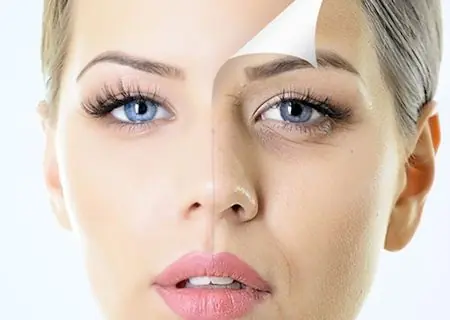
Skin care after peeling will help avoid painful sensations
After 3 days, old and dead cells begin to flake off and the skin bursts. This is a natural recovery process. After deep peeling for 5-7 days, the skin becomes more sensitive. Characteristic signs are swelling, redness, pain. You can reduce their manifestation with cosmetics based on hyaluronic acid, aloe vera and Bepanten cream.
After peeling, you need to take care of proper skin care. This is an effective procedure that helps renew the skin and restore the functioning of the sebaceous glands.
Each type of peeling is characterized by pain, hypersensitivity and redness.
Video about skin care after peeling
Jessner peeling, skin care after:
Skin care after peeling:



